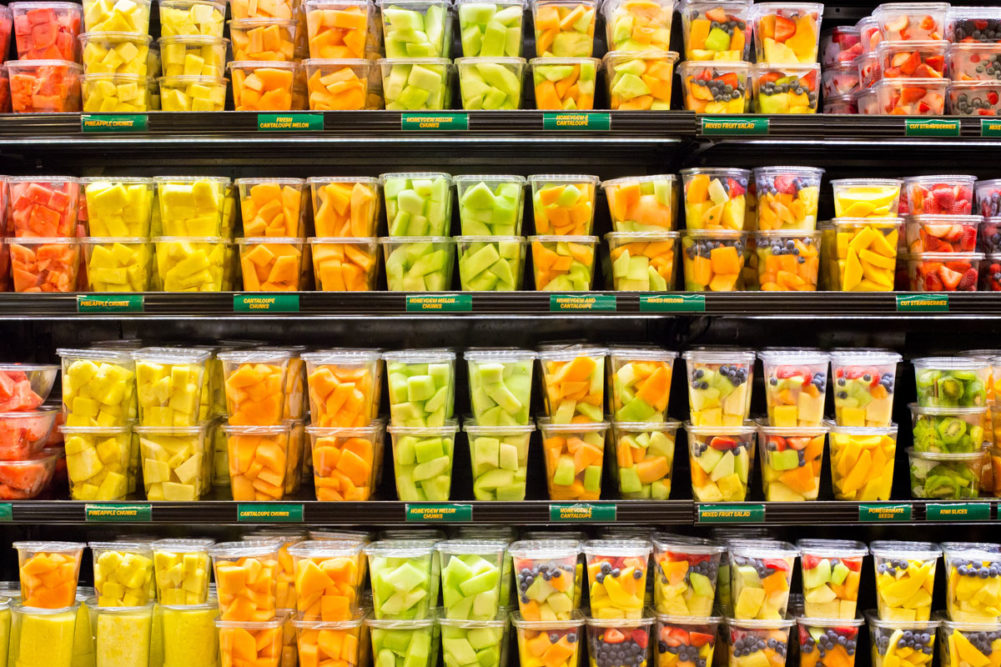WASHINGTON — The Food and Drug Administration is set to publish its long-awaited traceability final rule for high-risk foods in the Federal Register on Nov. 21. The regulation requires additional recordkeeping requirements by the harvesters, processors and distributors of products designated by the FDA and included on the agency’s Food Traceability List (FTL).
Product categories included on the list are fresh leafy greens, melons, peppers, sprouts, herbs, tomatoes, cucumbers and tropical tree fruits, as well as shell eggs, nut butters, fresh-cut fruits and vegetables, ready-to-eat deli salads, cheeses (other than hard cheese), finfish and crustaceans, according to the FDA.
"This rule lays the foundation for even greater end-to-end food traceability across the food system that we're working on as part of the New Era of Smarter Food Safety initiative," said Frank Yiannas, the FDA's deputy commissioner for food policy and response. "This standardized, data-driven approach to traceability recordkeeping helps create a harmonized, universal language of food traceability that will help pave the way for industry to adopt and leverage more digital, interoperable and tech-enabled traceability systems both in the near term and the future."
Businesses impacted by the final rule will be required to have a traceability plan to help regulators understand a company’s traceability program. The program will include a description of procedures used to maintain required records, descriptions of procedures used to identify foods on the FTL, descriptions of how traceability lot codes are assigned, a point of contact for questions regarding the traceability plan and a farm map for those that grow or raise a food on the FTL.
“Central to the proposed requirements is the assignment, recording and sharing of traceability lot codes for FTL foods, as well as linking these lot codes to other information identifying the foods as they move through the supply chain,” the final rule said.
At key points throughout the supply chain, including at harvesting, initial packing, receiving, processing and shipping, records containing key data elements about foods on the FTL will be required. At the farm level, for example, a farm map showing the area where the food is grown or raised, including geographic coordinates, will be required.
Harvesters and coolers of raw agricultural commodities, other than those obtained on a fishing boat, that are on the FTL must keep records of their activities and provide the information to the initial packers of the products. Packers and processors must assign a traceability lot code to the food to help ensure accurate identification of the food as it moves through the supply chain, as well as maintain other records relating to their activities.
Shippers and receivers of FTL foods must keep records of their actions, and shippers must provide the traceability lot code and other information identifying the food to the recipients of the food, including information relating to the traceability lot code source.
Companies also will be required to provide requested records to the FDA within 24 hours and provide records in an electronic sortable spreadsheet when necessary to assist the FDA during an outbreak or recall.
The final rule is scheduled to go into effect 60 days after publication in the Federal Register. Affected businesses will then have three years to come into compliance with the rule.
“In this interim period, we intend to provide outreach and training, as well as guidance and other materials, to help all sectors of the food industry come into compliance with the new traceability recordkeeping requirements applicable to them under the new regulation,” the FDA said.
Jennifer Hatcher, chief public policy officer for the FMI – The Food Industry Association, Arlington, Va., expressed disappointment that the FDA did not publish a supplemental rule rather than final rule.
“We believed a supplemental rule was a critical step to ensure that a final regulation is consistent with the statutory mandate and realistic in terms of the ability of companies of all sizes to comply,” she said. “It is already clear that implementation of the requirements in the rule will demand tremendous investments of time and resources across the entire food industry, and it looks like this rule significantly exceeds the statutory authority, both written and intended, by Congress.
“FMI and our members work every day to further strengthen the safety of our food supply and the continued rapid removal of any impacted products. This work needs to be done in the most efficient, consistent manner across all elements of the food supply chain with the least possible impact on food prices, greatest impact on results, and consistency with the intent of the law passed in 2011. Based on our quick review of this incredibly complex rule, it does not accomplish this.”





